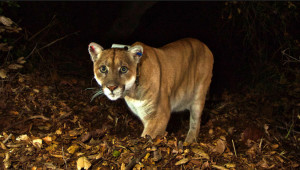Sounds like a powerful argument against immigration of incompatible sub-species.
Los Angeles Times: In 1894, a pregnant house cat escaped from a lighthouse on Stephens Island, New Zealand. She had her kittens in the wild, where they went feral. Within 13 months, a native bird species known as the Stephen Islands wren was nearly extinct.
It’s a story often cited as an extreme – and by some accounts exaggerated – example of the damage that invasive mammals can do to delicate island ecosystems.
But the plot is hardly unusual. On islands where native species evolved with no natural predators, intruders like rodents, feral cats and goats can quickly outcompete or even eat the locals.
Islands are home to 15% of the world’s terrestrial species, but they represent 61% of recorded extinctions, experts say. Invasive species usually were a factor.
Now a new study is making the case for a tried-and-true method of staving off this island extinction “crisis”: Get rid of the invasive mammals.
“We spend billions of dollars a year on conservation … but you can help a lot of the world’s biodiversity by removing” these invasive animals, said study leader Holly Jones, a conservation biologist at Northern Illinois University. “In terms of gain per dollar spent … it’s a pretty darn good return on investment.”
…The study looked back on eradication projects since the 1970s and ‘80s, when some of the first techniques were developed for removing invasive mammals. The study also included a 1925 effort to remove the feral descendants of the Stephens Island lighthouse keeper’s cat, which came too late for the wren but aided the recovery of the fairy prion bird and a nocturnal reptile called the tuatara.
…While the study highlights the importance of removing harmful invasive species from islands, it’s just as important to make sure the interlopers don’t come back after multi-million-dollar eradication efforts, Jones and Holmes said.
On the Channel Islands and those around New Zealand, for example, officials take strict biosecurity measures to prevent invasive species – especially rats – from hitching rides onto the islands. In New Zealand, visitors must unpack all their belongings in rodent-proof rooms and on some islands, including Anacapa, pass through tunnels lined with rat traps when they land.
Holmes said the results should encourage similar projects on other affected islands.
“There’s thousands of islands that we know have threatened species and continue to have invasive mammals,” he said. “If we want to prevent these species from going extinct, we have to do these interventions in pretty quick clip.”
Prime Suspect in Koala’s Murder: Los Angeles’s Mountain Lion
LOS ANGELES — The murder was grisly. A koala disappeared from the Los Angeles Zoo one night this month. Its body, mangled and bloody, was found the next morning on a nearby hillside.
Suspicion immediately fell on the area’s most famous resident: a wild mountain lion, known as P-22, who has made a home in the rugged hills near the zoo in this city’s Griffith Park since wandering from a nearby national recreation area in 2012.
The big cat had been caught on video roaming the zoo on the night of the attack. Besides, who else could have hopped the zoo’s nine-foot fence? Certainly not a coyote.

